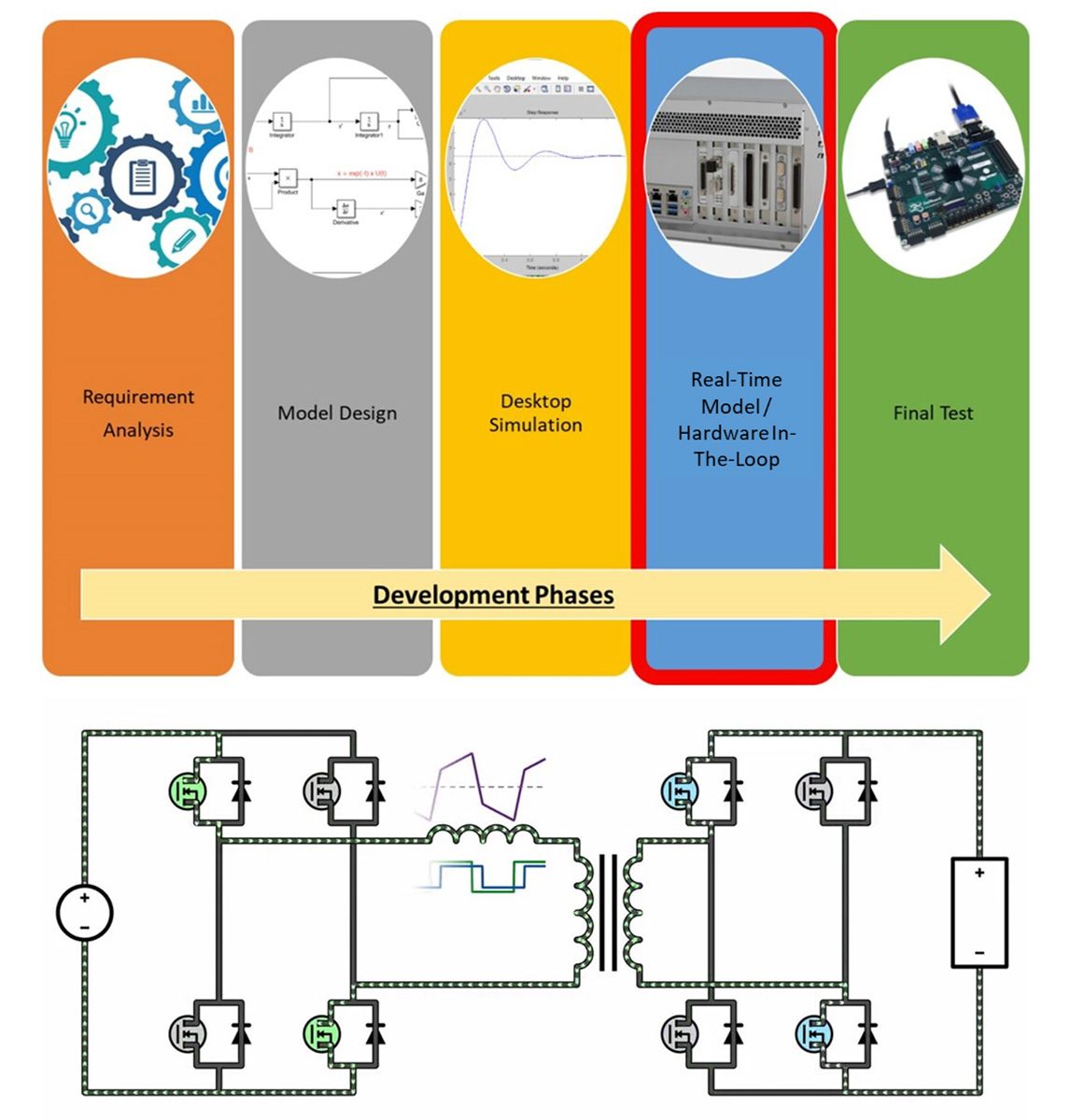Aeromechs Develops a Dual Active Bridge for Aircraft Onboard Power Electronics Switching at 400 kHz with Hardware-in-the-Loop Testing
Team Reduces Simulation Time with Real-Time Capability
“MathWorks consultants showed us new techniques to speed up simulations on Speedgoat test systems and allowed us to fit our plant models on a Simulink-programmable FPGA I/O module. They were proactive and clear and conveyed to us their knowledge on the discussed topics.”
Key Outcomes
- Modeled high-fidelity novel DAB topologies with Simulink and deployed them on a Speedgoat real-time test system, enabling HIL testing
- Found errors in the design without the need for expensive power electronics prototypes, minimizing the risk of damage
- Enabled the emulation of physical characteristics and timing behaviors that are usually hard to simulate without connecting to the actual hardware
Based in Aversa, Italy, Aeromechs’ mission is to support a shift toward carbon-neutral aviation through electrification. The company has strong experience in the DO-178C certification process for software development, as well as in developing smart electrical power management models using a model-based approach with automatic code generation. With its expertise, Aeromechs develops smart power management strategies for a variety of power converters, including dual active bridges (DABs), which, with bidirectional current flow and isolating capabilities, are essential to aircraft electric power system safety and efficiency.
However, stringent requirements for aviation applications mean that DABs must have high switching frequencies, requiring highly dynamic pulse-width modulation (PWM). This reduces voltage ripples, providing a clean power supply to onboard equipment. High-frequency switching also reduces passive element size, helping reduce equipment weight—which can play an essential role in decreasing CO2 emissions caused by aviation. On the other hand, increasing the frequency also has drawbacks, such as higher switching losses, higher EMI emissions, and higher component stress. Given this tradeoff, it is important to find optimal switching frequencies.
To optimize the controller for a DAB with 400 kHz switching frequency, Aeromechs used simulations that test the controller under the exact conditions found in real-world operation. Although these simulations were possible with model-in-the-loop (MIL) testing on a desktop PC, they would be too slow, even for a few milliseconds of simulation. Instead, the team wanted to improve simulation time with real-time capability. They therefore modeled the DAB with higher fidelity using Simulink®, and, to ensure this more complex model could run in real time, they deployed it on a Speedgoat® real-time test system equipped with a Simulink-programmable FPGA I/O module. MathWorks consultants advised Aeromechs on speeding up the simulation and code generation.
The control strategy on a target board and the DAB plant model could then be run in real time, side by side, resulting in a nearly 300x speedup over desktop simulation. This speedup enabled Aeromechs to conduct hardware-in-the-loop (HIL) testing and save time on debugging the physical system. In the future, the team intends to apply HIL methods earlier in the design cycle—for example, to apply stimuli and view results interactively.
